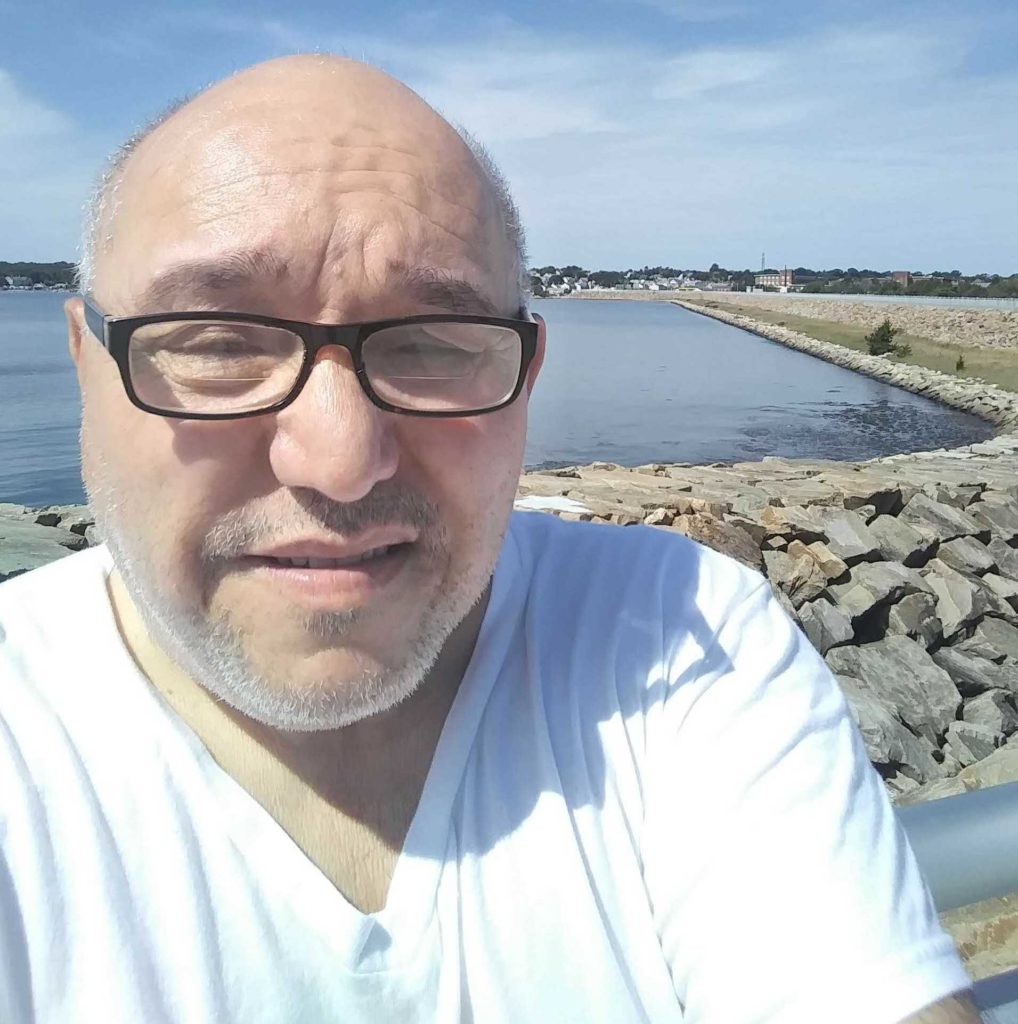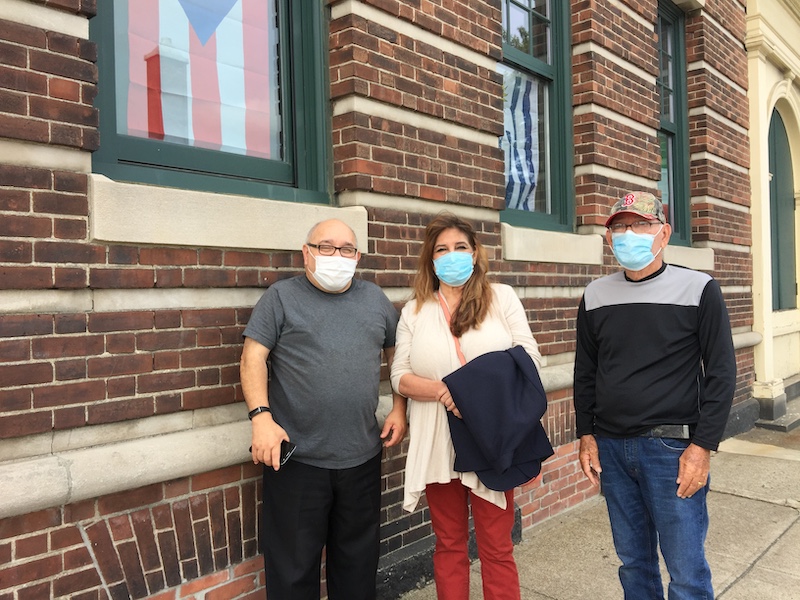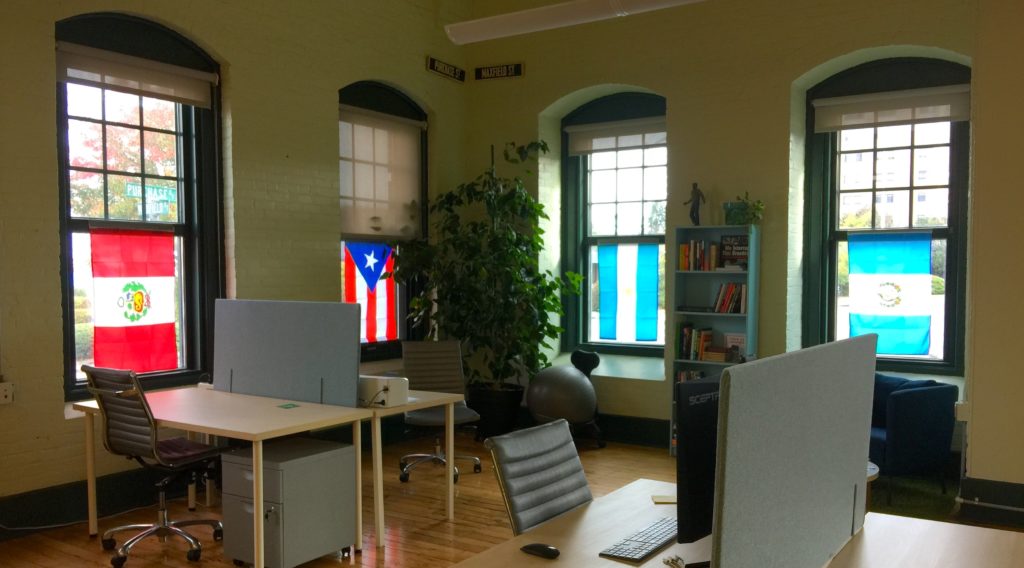David Soto on Latino Culture and why we are a salad, not a melting pot

David Soto joined Groundwork just a couple of months ago. We’ve been taken by his warm personality, and he was the inspiration behind the flags hanging in our windows to celebrate Latino Heritage Month. David generously offered to lead a webinar on cultural competency with us this month, so I asked him about his own story and what inspires him to do the work that he does.
Tell us your story. Where were you born, and when did you arrive on the South Coast?
I was born in Puerto Rico and raised in Brooklyn. I did all of my schooling in Brooklyn up through high school. How I came to the South Coast is a story in itself! When I was around 12 years old, a person came to our block in Brooklyn and took us camping. I fell in love with the forest and the country. Around 1976, my brother moved to New Bedford and I went to visit. I thought, “Wow! My brother lives in the country!” So I fell in love with New Bedford, and I wanted to move to “the country.” I picked up everything and moved here, and I’ve been here ever since.
How many Hispanic countries are represented on the South Coast, and which ones have the largest populations here?
I would say there are about eight countries with very strong populations here: Puerto Rico and Dominican Republic in the Caribbean, and then we jump to Central America with Guatemala, Honduras, El Salvador, and Mexico, and there we spread out to other parts in South America like Uruguay, Columbia, Venezuela, and Argentina. But by far the largest populations are from Puerto Rico, Guatemala, Honduras, and El Salvador.
What are some of the cultural characteristics that make these communities unique?
Most Latino countries have a blend of three different cultures– Spanish, African, and indigenous cultures. So we have a wonderful mixture of music, food, and family in our cultures.
The Latino community is united by language, but not necessarily by everything else. Definitely not food! Our food is very different. But Latinos are proud, and as a community we tend to be extremely respectful of other cultures.

What are some of the challenges you’ve faced as a Latino living in the United States?
I was raised in Brooklyn, in what was definitely a Puerto Rican community– so I didn’t even need to speak English. But school was in English. When I moved to a town in New Jersey called Bayonne, people would look at me differently. They thought I combed my hair differently, because I had a big afro. I mean, I tied my shoes differently. My way of dressing was different.
In school, one of the things that I do remember clearly was that if you wanted to succeed, you had to act like an American. Dress like an American. Eat like an American. So the vision of the melting pot was put very strongly on us. We had to change the way we did things.
My junior high school teacher told me I wasn’t smart enough to go to a science school. I was a straight-A student in the top level of class, but he told me the entrance test would be too hard. So I believed him wholeheartedly and I didn’t take it. All my friends were like, “David, how come you didn’t take the test? It was so easy.” So you know, at that time we always looked up to people from the white community giving us advice. We thought they wanted to help but sometimes it didn’t always work out that way.
I have friends who have moved to the United States from Latin America, and they often get homesick because the culture is so much colder here.
That’s one of the reasons you will find pockets of Guatemalans, or Puerto Ricans in the community. We want to congregate together to support each other. You want to be able to have your food, your music. We believe in taking that back yard, and putting lights up, and sitting there and playing dominoes. Some communities think you shouldn’t be doing that. So when you’re isolated, and not surrounded by your own people, it makes it difficult.
For the longest time, the line was: the United States is a melting pot. But the Latino community can’t melt in. We’re more like a salad. We’ve got tomatoes, we’ve got lettuce, we’ve got all these things. Each one has their own distinctive taste, but when you put them all together, it’s great.
In your work as a medical interpreter, you spend a lot of time communicating between cultures. Are there common misunderstandings that you see?
There are, but I’ve been there for 18 years, and I don’t see it as much these days. We have a great staff of nurses and doctors, and a lot has changed, thanks in part to the program of interpreters. But when I first started, there were many issues. One of the biggest misconceptions we had to deal with was that “If a person speaks Spanish, somebody who speaks Portuguese will be able to communicate with them.” It might be similar in some ways, but when it comes to medical vocabulary, it’s a totally different world. So we had to deal with the idea that Portuguese and Spanish were the same.
Another issue was that if somebody comes from Latin America or the Caribbean, they might have certain spiritual beliefs or ways of using herbal medicine. Sometimes when they brought that up, doctors would dismiss them, and they felt disrespected. Now you don’t see that anymore. You see doctors asking questions, and talking, and working it out. It is much different now than what it used to be.
Also in Central America, the emergency room seems to be everything. For people who lived in a small village, there’s one clinic, and that’s where they went for everything. Years ago, everyone would get very impatient with that, but now they understand. We have a great medical staff here (St. Lukes). People are becoming more and more resilient, and they trust the interpreters more.
How can South Coast residents better connect to our Latino neighbors and communities?
Various things. One thing is we need to be cautious of what we listen to, whether it is the radio, TV, the news. Some things come from a very stereotypical point of view. Just because I speak with an accent, does not mean that I think with an accent. Sometimes, people think that if you speak with an accent, you’re not as smart. So people need to realize that we are human beings, who are actually extremely intelligent because we’re speaking two languages.
There are three terms that are important to bring up: there’s racism, discrimination, and there’s prejudice. You pre-judge someone, but once you start to learn about them, you can judge in a different way. I don’t think that comes from a place of hate. Discrimination, well, we all discriminate. I might discriminate against a person because of the perception I got from television or the newspaper of wherever. So understanding is a big piece– try to learn. Always try to learn. Now racism, I think that comes from hate. I don’t have much to say about that, I think it is a matter of the heart more than a matter of the mind.
I think it’s really an issue of trying to understand what a person is really like. And not assuming from watching movies. Not all Mexicans sit on a wall, with the sandals and the hat, looking down. (Laughter.)

What other projects are you working on?
I am a pastor of a bi-lingual congregation. We meet in Dartmouth at the Smith Mills Church building. We have programs for children whose parents are in jail. Then there’s another project that is called LatinoAqui. Our intention at LatinoAqui is to inform the Latino community about what’s going on. And to connect businesses and social service programs with the Latino community. That all happens through a Facebook page.
I am also starting the Centro Cultural VIDA (vision, information, direction, advocacy). We want to help people develop a vision for their life. I believe that without a vision, people perish. But they also need information, guidance, and advocacy. So we are educating people about the services that are available.
There are very limited Latino-owned and Latino-based programs in the area. If something comes directly from the community itself, it is much better. We want the community itself to be the force behind those grassroots efforts. We are close to 50% of the population of the city now… to not have our own programs and organizations is crazy.
Wow, that’s like Miami!
Yes, New Bedford is a beautiful place. All the diversity! And just because someone is different, we don’t need to be intimidated. Why not celebrate who we are? Let’s make that salad taste better.
Join us to learn more from David about Latino Cultures on the South Coast October 7th at 11am. More information and registration here >
- Meet Our General Manager: Nicole Cosme - February 26, 2024
- Can I use a coworking space for Google My Business? - April 26, 2023
- Marketing Lab: The Best Business Resource on the South Coast You Didn’t Know About - March 23, 2023
